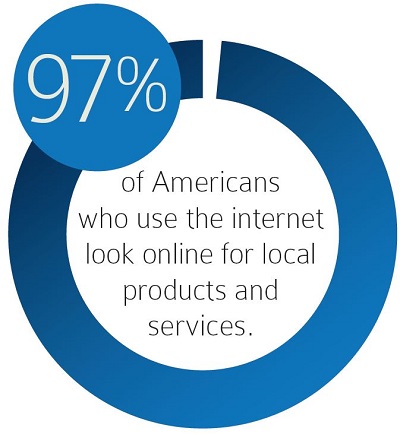In the short history of Google+, Google has made a number of changes to its business listings offering, and confusion has crept in for brands and businesses looking to optimize their local presence. But whether local marketers are stuck with an old Google+ Places page or have the updated Google+ Business page, they can use these Elite Eight Tips for Google+ Local listing optimization.
8. Don’t Spend Unnecessary Time on Google+ if Customers Aren’t There
The social aspects of Google+ (+1’s, comments, fan engagements) can be incredibly powerful. Google uses the interactions as an indicator of relevance, and they trump the usual relevance indicators associated with search.
For example, if a searcher has a restaurant in a Google+ circle and has recently interacted with a post, when they search for restaurants in their location, Google will prioritize this restaurant in the search results as it knows the searcher enjoys it.
But in some instances, a business’ customer base may not be active on social networks like Google+. For these businesses, a basic presence including an accurate address, phone number, and website should be sufficient. Why spend time building an expansive social profile for an audience that isn’t there?
7. Get Personal
When the audience exists, more personalization ensures a better experience. By customizing its Google+ Local Page, a business can differentiate itself from its primary competitors.
To do so, marketers should use a banner, pictures, and videos to customize the page and improve click-through rates. The next step should be to tailor content to the local community.
If the business has sponsored a local softball team or participates in community service, highlight these community commitments through page posts, photos and videos. Personal is powerful, and people care about their communities.
6. Create Custom Business Descriptions
Getting as specific as possible with categories for each listing is critical for improving search rankings, but local marketers shouldn’t overlook crafting custom business descriptions to differentiate the business from the competition.
Using primary keywords that reflect the nature of the business helps consumers understand the business, increasingly the likelihood of conversions. But don’t oversaturate the descriptions with keywords.
5. Continue Monitoring and Modifying Listings Depending on Performance
Routine maintenance and optimization can go a long way toward improving search ranking and performance. Once a listing has been updated, local marketers should monitor the performance to determine whether previous optimizations are having a positive impact; if not, then it’s time to revisit the listing and see what can be improved.
Sometimes, a listings’ performance can plateau; if a listing has a top-three position in a local search result and has maintained that status despite recent optimization attempts, further efforts to improve position may prove fruitless and could have a negative impact on rankings.
As with organic search, overthinking on-page, or in this case on-profile, optimization can have a detrimental effect on performance.
4. Cultivate Reviews
Recent consumer reviews are incredibly powerful, especially on the local level; positive reviews can propel waves of new business as consumers put more trust in “unbiased” reports from their peers. Turns out, Google loves them too and uses review frequency as an indicator of relevance.
If a business has received five reviews in the last month, Google is likely to prioritize it over a business which has received five reviews in the last year. Businesses should be sure and ask customers to provide a review at every opportunity and consider ways to reward them for doing so.
3. Optimize for Customers, Not for Google
Remember when I said not to flood a business description with keywords? This is why: optimizing a business page for customers involves writing with natural language.
Consumers don’t want to read jumbled descriptions crammed with keywords that lack insight into what the business does. Instead, provide clear and concise copy that defines the primary focus of the business.
More consumers will click through and engage, and Google will see these engagements as a sign of relevancy, boosting the likelihood of improved local search ranking.

Image Credit: Google
2. Be Patient; Don’t Manually Merge Local and Business Listings
In the midst of all the Google+ changes, many businesses ended up with a listing on both Google+ Local and Google+ Business (Places). Of course, businesses then flooded Google with requests to merge the two, which Google tried to accommodate.
A year ago Google has asked that businesses hold off on their attempts to merge these pages manually as Google began automatically merging them. For those with two listings, the wait can be frustrating, but attempting to manually merge the listings are creating major data issues. So it’s best to be patient and hope that Google will sort the remaining listings out soon.
1. Remove Duplicate Listings
I just said not to manually merge Google+ Local and Google+ Business listings, and I stand by that! But that doesn’t mean local marketers shouldn’t remove duplicate listings in Google and other local sites like Yelp. Listings accuracy is the most important factor for online searches – if a business’ address or phone number isn’t correct, it’s missing out on potential customers.
On many of these sites, users can input data for places they visit; unfortunately, this often creates duplicate or incorrect listings. These “zombie” listings need to be removed or they’ll eat traffic from the official/accurate page.
